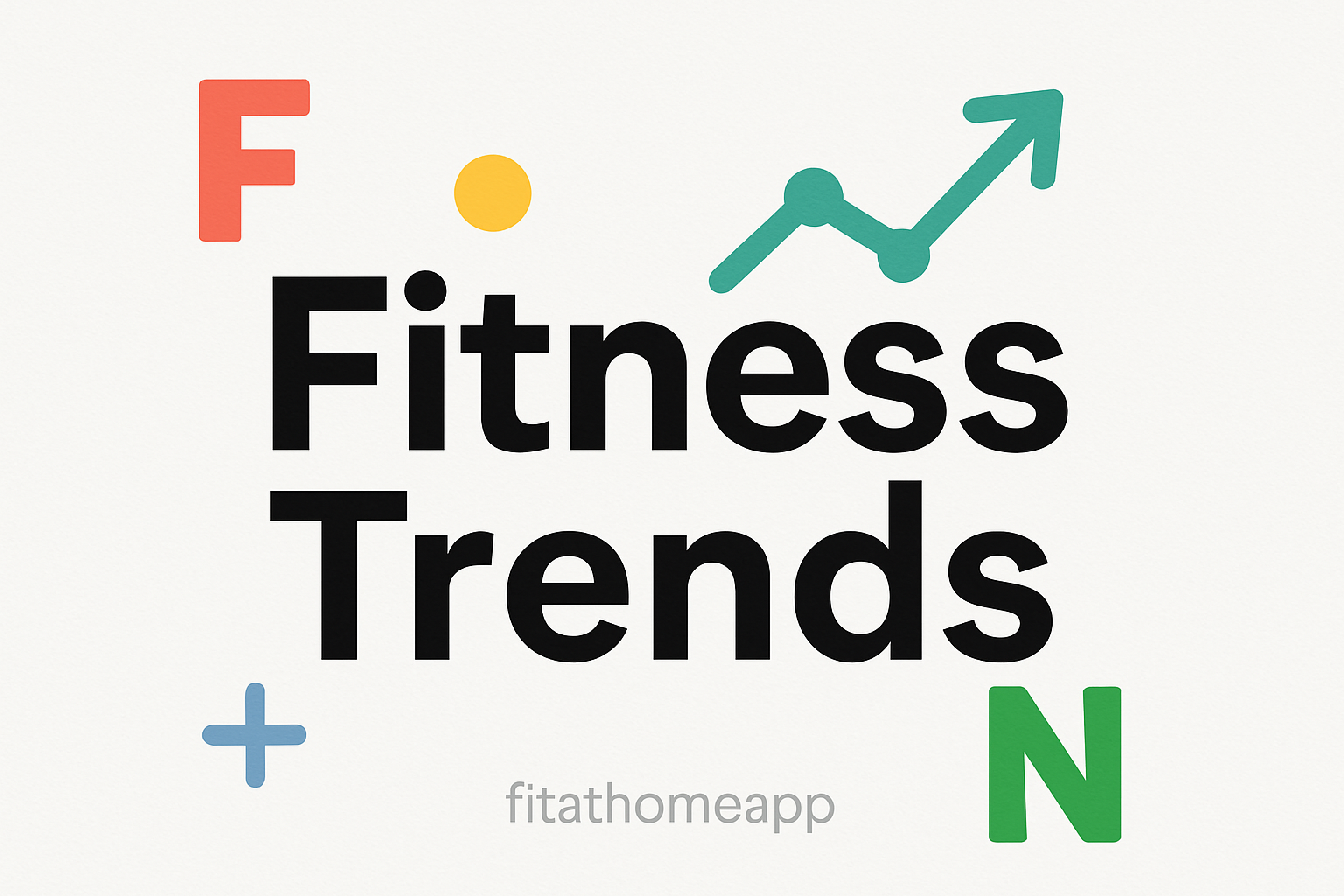🔥 Introduction: The Evolving World of Fitness
In 2025, fitness in the U.S. is about more than just building muscle or losing weight—it’s a lifestyle revolution. Americans are embracing smarter, more personalized, and more holistic approaches to health. Whether you’re a gym-goer, a home workout fan, or someone just starting their wellness journey, staying on top of fitness trends can inspire new goals and better results. 💡
Let’s explore the top trends transforming how people stay active and healthy this year.
🔁 1. Hybrid Fitness Models: The Best of Both Worlds
The rise of hybrid fitness combines in-person workouts with online classes. This model allows flexibility for busy schedules and offers something for everyone—from studio vibes to at-home comfort. 🏋️♀️💻
Join a spin class at the gym or stream it from your living room.
Mix face-to-face motivation with digital convenience.
Use apps to track your progress and connect with trainers anytime.
Hybrid fitness gives people freedom, accessibility, and the ability to stay consistent wherever they are.
🎯 2. Personalized Workouts Powered by Tech
In 2025, fitness is all about YOU. Thanks to smartwatches, fitness trackers, and AI-powered apps, workouts can now adapt to your goals, energy levels, and health data. 📱⚙️
AI apps like Freeletics and Aaptiv offer custom workouts.
Devices like Fitbit and Apple Watch track progress and recovery.
Virtual personal trainers give feedback and adjust your plans in real time.
Tailored fitness leads to better results, greater motivation, and a sense of ownership over your health journey.
🧘 3. Mental Wellness Meets Physical Fitness
The connection between mind and body is stronger than ever. In 2025, many Americans are including mindfulness practices in their workout routines to stay balanced and centered. 🧠💪
Yoga, meditation, and breathwork are being integrated into fitness programs.
HIIT classes may start or end with mindful reflection.
Apps now include guided meditations alongside strength and cardio plans.
Fitness isn’t just about the body anymore—it’s also about mental clarity and emotional health.
🌱 4. Sustainability in Fitness
Going green is now part of getting lean! More fitness lovers are choosing eco-conscious brands and practices. 🌍♻️
Gyms are reducing waste, using solar energy, and offering reusable towel programs.
Activewear brands focus on recycled fabrics and ethical production.
Home fitness fans are using bodyweight workouts to cut equipment waste.
Sustainable fitness is here to stay, promoting health for both people and the planet.
🤖 5. Smarter Equipment and Virtual Reality Workouts
Tech is turning workouts into experiences. From smart resistance machines to VR fitness games, exercising has never been more engaging. 🎮🏋️♂️
Smart gyms give real-time feedback using AI.
VR lets users explore scenic runs, boxing matches, or dance classes.
Connected home gear adjusts automatically to match your performance.
Fitness in 2025 feels more like fun than a chore—thanks to immersive technology.
🤝 6. Group Fitness Makes a Comeback
After years of solo workouts, group fitness is booming again. Community is key for motivation and accountability. 👯♀️🎶
Boot camps and outdoor fitness meetups are trending.
Live-stream group classes help people connect from anywhere.
Social media fitness challenges encourage shared progress.
Whether online or in-person, working out with others can spark joy and consistency.
🛌 7. Recovery and Injury Prevention Are Front and Center
Recovery is no longer an afterthought—it’s part of the plan. More people now understand that rest and rehab are essential to progress. 🔄🧊
Foam rollers, massage guns, and compression tools are household items.
Active recovery days (walking, light yoga) help prevent burnout.
Stretching and mobility sessions are just as popular as strength training.
Smart recovery keeps your body strong and injury-free.
🌟 Final Thoughts: The Future of Fitness Is Personal, Powerful, and Mindful
Fitness in 2025 is about more than reps and routines—it’s about creating a lifestyle that supports your physical, mental, and emotional well-being. With the help of technology, community, and a deeper understanding of wellness, Americans are redefining what it means to be fit.
Choose the trends that align with your goals, experiment with new ideas, and most importantly—keep moving! 💥
This video provides a strong, forward-looking overview of how fitness continues to evolve in the U.S., blending technology, personalization, and accessibility. It’s not just a prediction piece — it reflects real shifts in how Americans are approaching health in a post-pandemic, tech-driven world.
✅ Why this video adds real value:
It highlights powerful trends like:
AI-powered workout apps and smart wearables
Hybrid fitness models (gym + home + virtual coaching)
Recovery & wellness emphasis (cold plunges, mobility, sleep tracking)
A growing focus on mental fitness as part of overall well-being
🧠 Coach’s Perspective:
This video makes it clear: fitness is no longer just about lifting weights or doing cardio. In 2025, it’s about data-driven personalization and creating a lifestyle that supports longevity. These trends give both coaches and individuals the tools to train smarter, not just harder.
🔥 Practical Tip for Viewers:
Try one new trend from this list — whether it’s tracking your sleep with a wearable, joining a virtual fitness community, or adding a 10-minute mindfulness practice. Small changes like these are the future of consistent, sustainable fitness.

